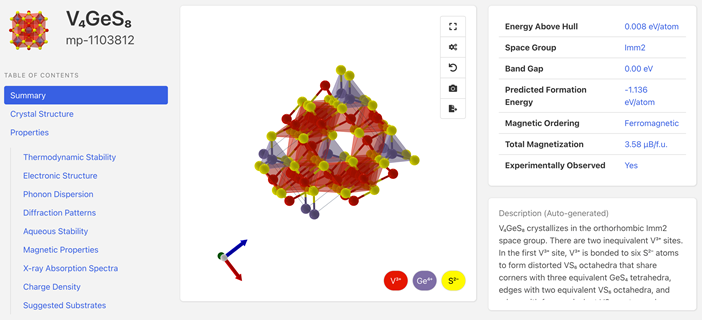AWS Public Sector Blog
Category: Research
Alex’s Lemonade Stand Foundation uses AWS to advance cutting-edge pediatric cancer research worldwide
In 2017, the Alex’s Lemonade Stand Foundation (ALSF) founded the Childhood Cancer Data Lab (Data Lab) to address an important gap in the pediatric cancer field: vast amounts of accumulated data were not being put to use at scale. To address this gap, the Data Lab used AWS to build refine.bio, an openly available collection of normalized bulk gene expression data, to make public datasets interoperable and reusable.
OpenFold, OpenAlex catalog of scholarly publications, and Capella Space satellite data: The latest open data on AWS
The AWS Open Data Sponsorship Program makes high-value, cloud-optimized datasets publicly available on AWS. Our full list of publicly available datasets are on the Registry of Open Data on AWS and are now also discoverable on AWS Data Exchange. This quarter, we released 15 new or updated datasets including OpenFold, OpenAlex, and radar data from Capella Space. Check out some highlights from the new or updated datasets.
Creating access control mechanisms for highly distributed datasets
Security is priority number one at AWS. Data stored in Amazon Simple Storage Service (Amazon S3) is private by default. However, some datasets are made to be shared. In this blog post, we cover the no-cost mechanisms data providers can utilize to create access control policies for their highly distributed open datasets.
Using open data to study the sounds of the ocean and create art
Can you see sounds? Using open data, you can. To celebrate this year’s World Oceans Day, an artist and sustainability application architect at Amazon Web Services (AWS), created an artwork titled Can You See the Sound of the Ocean. To create the art, she drew inspiration from the Pacific Ocean Sound Recordings from the Monterey Bay Aquarium Research Institute (MBARI), available through the Amazon Sustainability Data Initiative (ASDI). Learn more about the dataset and the art work.
Accelerate research with supplemental funding from the National Science Foundation’s CloudBank
Recently, the National Science Foundation (NSF) announced a new funding opportunity for any principal investigator (PI) with an active award from the NSF Directorate for Computer and Information Science and Engineering (CISE), for use of cloud services and technologies via CloudBank. PIs can submit requests for use of the AWS Cloud, on a rolling basis, with funding made available for the duration of one year. This is a first-of-its-kind opportunity for federally-funded researchers to explore the capabilities of the AWS Cloud, at no additional cost.
Managing the world’s natural resources with earth observation
With increasing pressure from climate change, loss of biodiversity, and demand for natural resources from already stressed ecosystems, it has become essential to understand and address environmental changes by making sustainable land use decisions with the latest and most accurate data. As part of the Amazon Sustainability Data Initiative (ASDI), AWS invited Joe Sexton, chief scientist and co-founder of terraPulse, to share how AWS technologies and open data are supporting terraPulse’s efforts to provide accurate and up-to-date information on the world’s changing ecosystems.
How Natural Resources Canada migrated petabytes of geospatial data to the cloud
Since 1971, Canada Centre for Mapping and Earth Observation (CCMEO) at Natural Resources Canada (NRCan) has accumulated an Earth observation (EO) data archive in excess of two petabytes (PB). NRCan wanted to modernize its geospatial offerings at a faster pace, so they turned to the AWS Snow Family on AWS to migrate their large volume of data.
Accelerating new materials design with open data on AWS
The Materials Project at Lawrence Berkeley National Laboratory (LBNL) is an open database that offers information about material properties, or, all the elements and substances that make up the products we use every day. By harnessing the power of the Department of Energy’s (DOE) high-performance scientific computing and state of the art electronic structure methods, the Materials Project provides open web-based access on AWS to computational datasets on both known and potential materials, along with powerful analysis tools to help discover, inspire, and design new materials.
Downscaled CMIP5, 1950 US Census, and open genomics data for Galaxy: The latest open data on AWS
The AWS Open Data Sponsorship Program makes high-value, cloud-optimized datasets publicly available on Amazon Web Services (AWS). Our full list of publicly available datasets are on the Registry of Open Data on AWS. This quarter, we released 13 new or updated datasets including CMIP5, 1950s US Decennial Census, and open genomics data for Galaxy. Read on for some highlights.
Predicting global biodiversity patterns in Costa Rica with ecosystem modeling on AWS
As part of the Amazon Sustainability Data Initiative (ASDI), AWS invited Rafael Monge Vargas, director of the National Center of GeoEnvironmental Information (CENIGA) at the Costa Rica’s Ministry of Environment and Energy (MINAE), to share how his team is helping advance conservation and economic development in Costa Rica and how they utilize ASDI and AWS to support these efforts.









